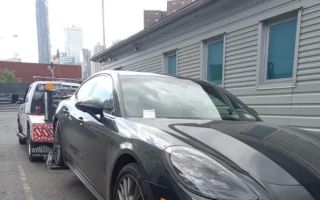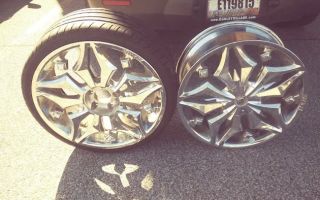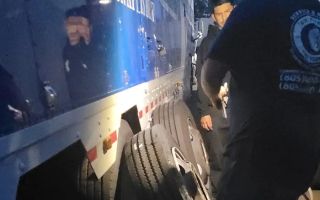Can I Jumpstart My Car in Cold Weather? Essential Tips for Drivers
As winter settles in, many car owners start to worry about the potential risks to their vehicle, particularly when it comes to jumpstarting their car during cold weather. It’s a common concern, especially for drivers in areas where temperatures drop below freezing. The simple answer is yes, you can jumpstart your car in cold weather, but there are important considerations and safety tips to keep in mind. In this guide, we’ll explore the ins and outs of jumpstarting your car in winter, common challenges, and how to avoid an emergency situation.

Essentially Driven
4151 Park Ave, Bronx, NY 10457, USA
1. Why Cold Weather Affects Your Car's Battery
Cold weather can have a major impact on your car’s battery and electrical system. When the temperature drops, the chemical reaction inside the battery slows down, which reduces its ability to generate power. This means that your car might struggle to start, and in some cases, the battery might not have enough charge to get the engine running at all. Typically, batteries are most vulnerable when temperatures dip below 32°F (0°C). Additionally, the oil in your engine becomes thicker in cold weather, making it harder for the engine to turn over, which further strains the battery.
For example, Sarah, a driver from Minneapolis, found herself stuck at a local coffee shop during a particularly chilly morning in December. After trying to start her car, she realized that the battery had died. Fortunately, she had a set of jumper cables and a friend nearby, but many drivers aren't always as lucky. This scenario is common during winter, and it highlights the importance of taking preventive steps to avoid getting stuck in the cold.
2. How to Safely Jumpstart Your Car in Cold Weather
Jumpstarting your car in cold weather is possible, but it’s crucial to take the right steps to avoid damaging your vehicle or injuring yourself. Here’s a step-by-step guide:
- Ensure Safety: Make sure both cars are parked safely, away from traffic. If possible, wear gloves to protect your hands from the cold.
- Prepare the Jumper Cables: Check the jumper cables for any damage and ensure they are long enough to reach both batteries.
- Turn Off Both Cars: Before connecting the cables, make sure both vehicles are turned off to avoid electrical surges.
- Connect the Cables: Connect the red (positive) cable to the positive terminal of both batteries. Next, connect the black (negative) cable to the negative terminal of the working battery, but connect the other end of the black cable to an unpainted metal surface on the engine block of the dead car. This prevents sparks near the battery.
- Start the Donor Car: Start the engine of the car with the charged battery and let it run for a few minutes. This helps to charge the dead battery.
- Start the Dead Car: Attempt to start the car with the dead battery. If it doesn’t start after a few tries, it may be time to call for professional assistance.
- Disconnect the Cables: Once the car starts, carefully remove the cables in reverse order: black cable from the engine block, black from the donor car, red from the donor car, and finally red from the dead battery.
3. What to Do If Jumpstarting Doesn’t Work
If jumpstarting your car doesn’t work, it’s a sign that there may be a more serious issue with the battery or another component of your car. Cold weather can make already weak batteries fail completely. If your car still refuses to start after a jump, it may be time to call in a professional towing or car rescue service.
Many drivers in snowy regions have experienced this firsthand. Take John, a driver from Chicago, who had his car’s battery die in the middle of a heavy snowstorm. After multiple unsuccessful attempts to jumpstart his car, he called a nearby towing service. The towing company was able to arrive promptly, even in the snowstorm, and replace his old battery with a new one. While this added a bit to his day, it saved him a lot of frustration in the long run.
4. Preventive Measures to Avoid Cold Weather Car Troubles
The best way to deal with car problems during the winter is to prevent them from happening in the first place. Here are some preventive tips:
- Check the Battery: If your battery is more than three years old, consider getting it tested. Cold weather can make old batteries fail more easily, so replacing it before winter hits is a wise move.
- Keep Your Car Warm: If possible, park your car in a garage or a sheltered area to protect it from extreme cold.
- Use a Battery Maintainer: A battery maintainer (or trickle charger) can help keep your battery at optimal charge, especially during periods of inactivity.
- Keep Your Tank Full: A full gas tank helps prevent condensation from forming in the fuel system, which can cause problems when starting your car.
- Check Fluids: Make sure your engine oil, transmission fluid, and antifreeze are all at the proper levels to keep your vehicle running smoothly in the cold.
5. When to Call a Towing Service or Car Rescue Service
Despite all the preventive measures, there are times when an emergency car rescue service is the only solution. If your car’s battery is dead, jumpstarting doesn’t work, or you’re stuck in a snowbank and can’t get out, it’s time to call in the professionals. Towing and car rescue services are equipped with the tools and experience to handle these situations quickly and safely.
In fact, many towing services offer emergency car assistance specifically for winter-related problems, including battery jumps, tire changes, and even towing if your car is stuck or disabled. Choosing a reputable towing service can save you time and stress, especially if you’re stranded in a remote area.
6. How to Choose the Right Towing or Car Rescue Service
When selecting a towing or car rescue service, consider the following factors:
- Availability: Make sure the service offers 24/7 emergency assistance, especially during the colder months when issues can arise at any time.
- Response Time: Look for a company with a reputation for quick response times, particularly in harsh weather conditions.
- Experience and Reviews: Check customer reviews and ask about the company’s experience in handling winter-related car troubles.
- Services Offered: Choose a service that provides a wide range of solutions, from jumpstarting and towing to tire changes and lockouts.
If you’re interested in learning more about reliable towing and car rescue services in your area, feel free to reach out to us. We provide expert solutions to all your cold weather car troubles, including fast, reliable towing and emergency assistance.

























